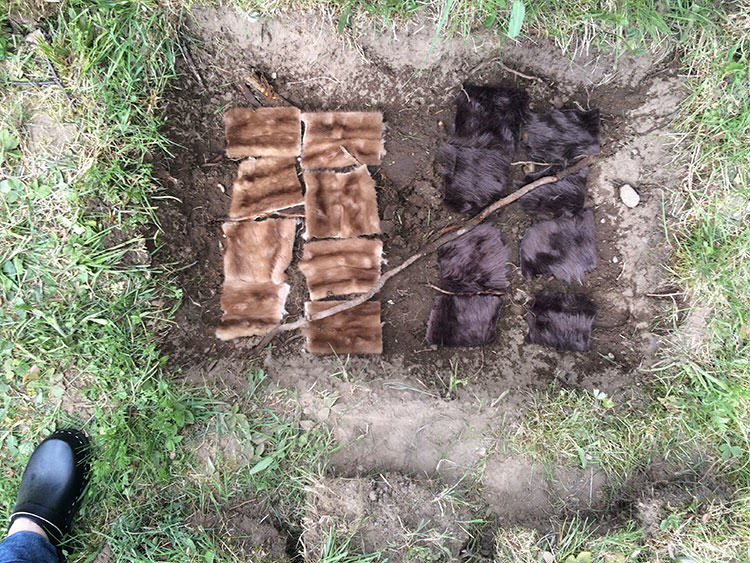
The fur industry is proud of the many ways in which fur is eco-friendly, including that after decades of use, it biodegrades. In contrast, when fake fur made from petrochemicals reaches the end of its useful, and typically very short, life, it goes in a landfill where it will sit until the end of time. Or will it? In pursuit of knowledge and truth, we decided to do a little experiment: the Great Fur Burial.
On May 14, we took a mink stole and a fake fur vest, cut them into equal-sized pieces, and buried them. Above is how the pieces looked on burial day. The plan was that after 3 months, 6 months, and then once a year for five years, we would unearth two pieces of the mink and fake fur to compare degradation rates. This experiment is hardly scientific, but it only has to show one thing: do they rot, or not?
Six Months Later …
Two weeks ago we unearthed another set of fur pieces. Our burial spot is marked by red sticks.
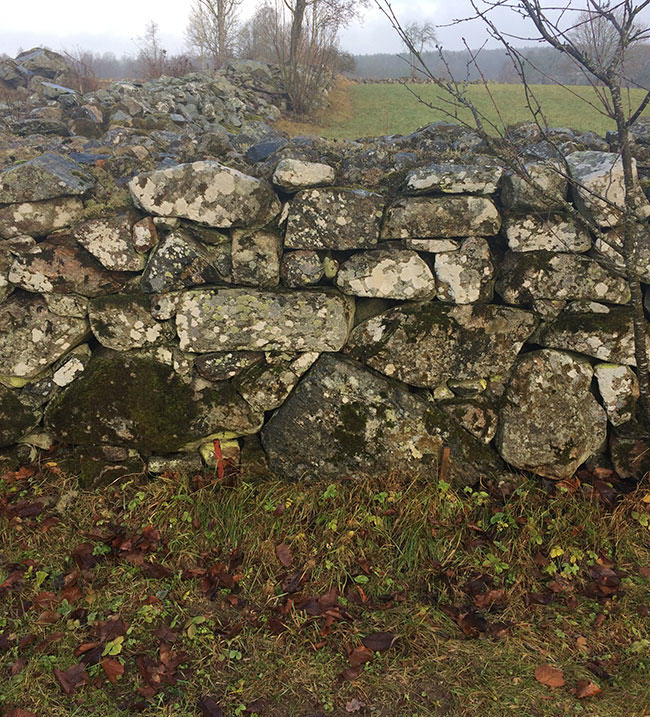
The synthetic fur was easy to find (left), whereas we had to be a lot more careful unearthing the real fur (right) as the pieces appeared to be much more delicate.
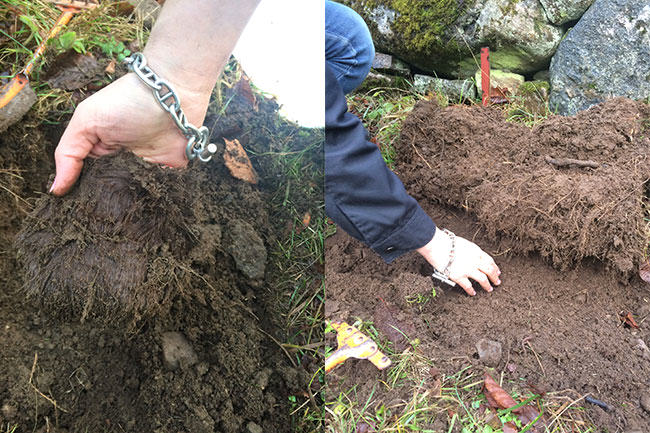
Once the fur pieces were out of the ground, they were placed, as is, on a tray. The real fur piece is on the left and the fake fur is on the right. As you can see, the real fur sample is much smaller than the fake sample, and not because of degradation. It seems the real fur sample must have been made of two pieces sewn together. The stitching rotted, and we ended up exhuming only one half.
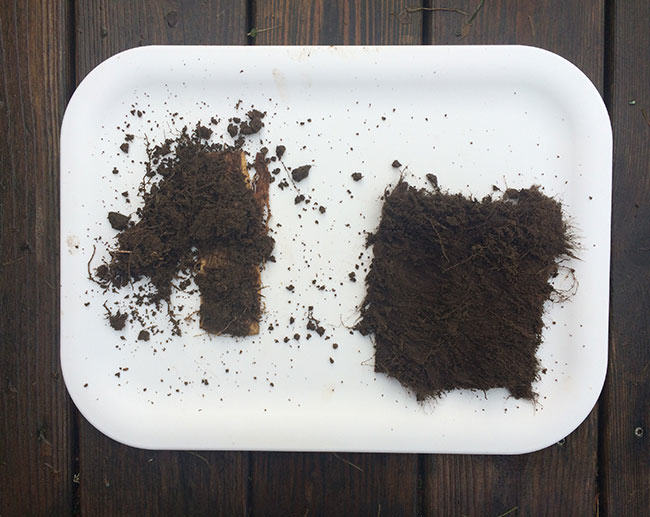
We gently shook some dirt off each piece but as the mud was really encrusted in the fur, we decided to let the samples dry for two weeks so we could clean them without causing damage.
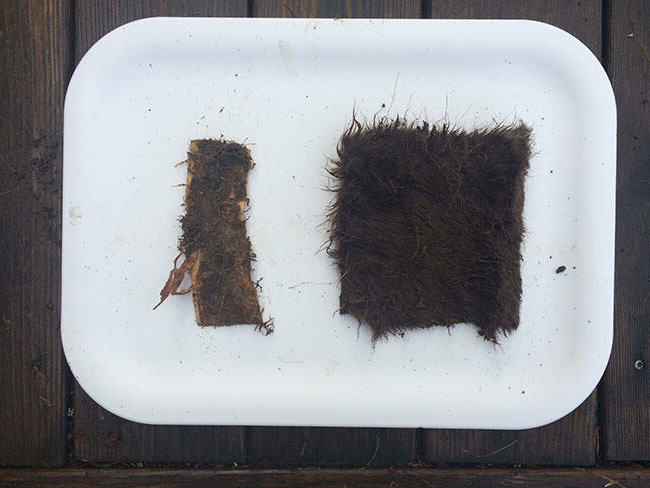
Two weeks later the dirt was dry and we gently shook off as much of it as possible, without having to rub the samples too much. It is quite obvious, looking at the photo below, that the real fur (left) has disintegrated a lot more than the synthetic. The synthetic fur (right) looks pretty much intact, whereas the majority of the hairs of the real fur seem to have disappeared. The leather is frail and the only parts of the real fur sample that seem to be in decent condition are the threads.
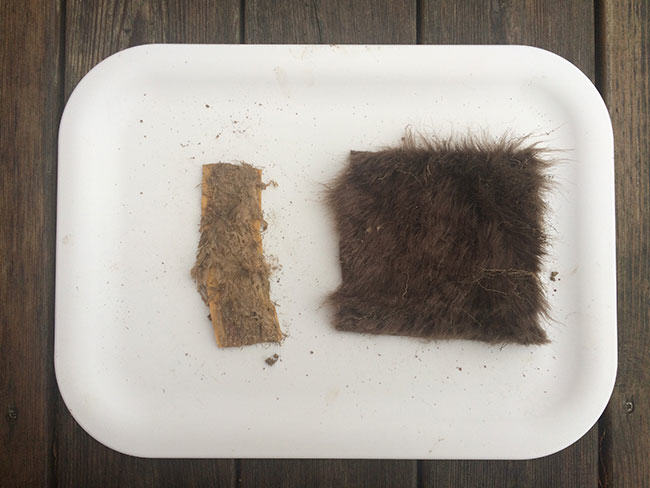
This photo shows the backs of the samples, and it is obvious that the real fur is in much worse condition than the synthetic fur.
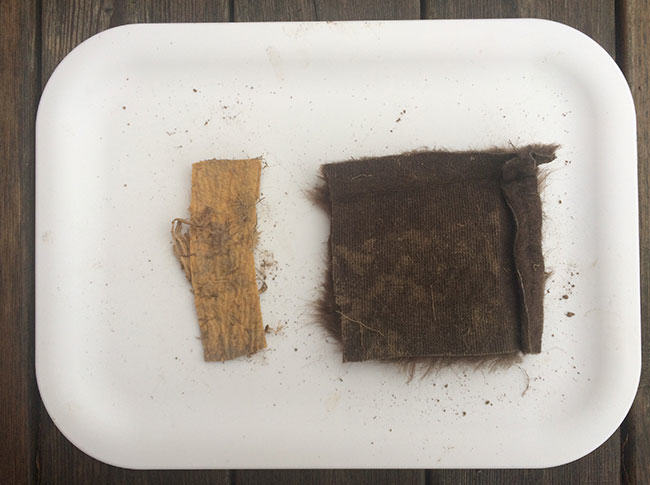
Let’s look at the real fur, close up. The hairs are practically gone and the leather is frail. The sample is disintegrating.
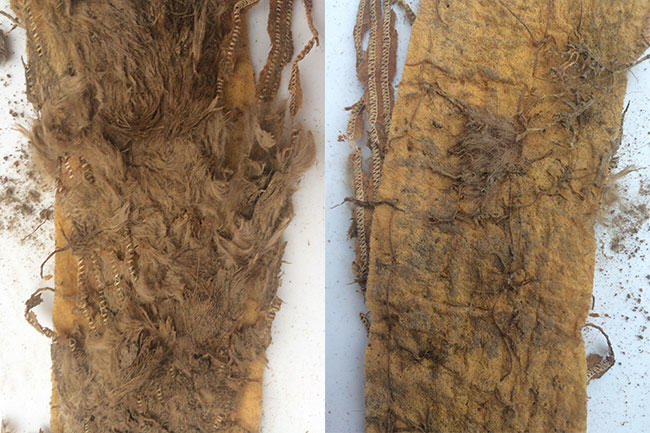
In contrast, the synthetic fur, below, still looks practically intact. The hairs are still soft and the backing shows very little change since it was buried. It is hard to imagine any dramatic change happening between now and our next exhumation a year from now, so it’s looking like the story is true: fake fur can sit in a landfill for hundreds of years.
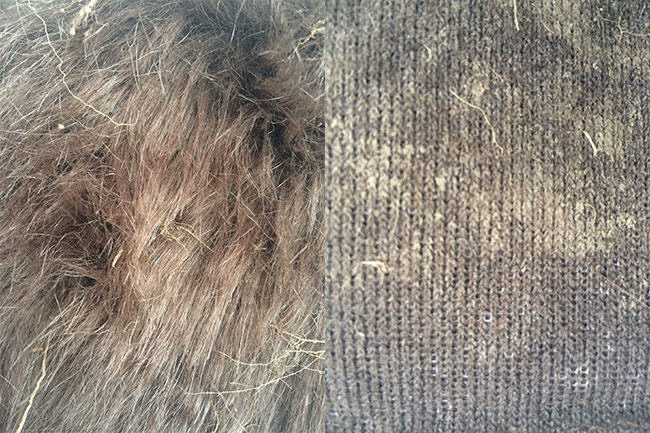
Summary
Equal-sized pieces of real and fake fur were buried side by side. After six months, the fake fur showed no obvious signs of degradation, biological or otherwise. In other words, it was almost perfectly intact. The real fur, however, was in an advanced state of degradation, with the hairs reduced to a few fine wisps, and the leather frail and delicate.
Like all good scientists, we’ll hold back on making conclusions until the experiment has run its course. But the way things are headed, it might not be long before we’re using tweezers and a magnifying glass to find a real fur sample. It will all then be down to the fake fur samples. Will they degrade in five years? Or by the end of time?
Read the other installments of this experiment:
The Great Fur Burial, Part 1: Burial
The Great Fur Burial, Part 2: After Three Months
The Great Fur Burial, Part 4: After One Year
SEE ALSO: New study compares natural and fake fur biodegradability. Conducted by Organic Waste Systems, Ghent, Belgium; commissioned by the International Fur Federation and Fur Europe, 2018.










